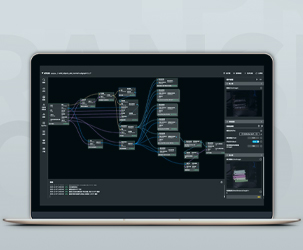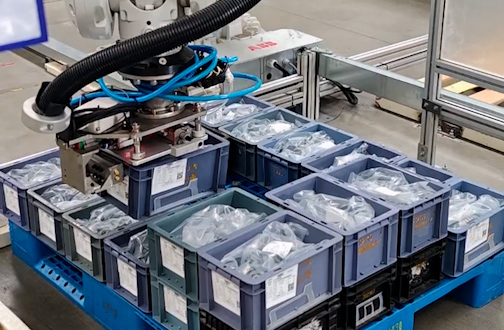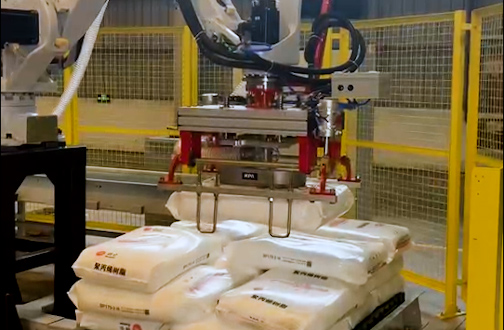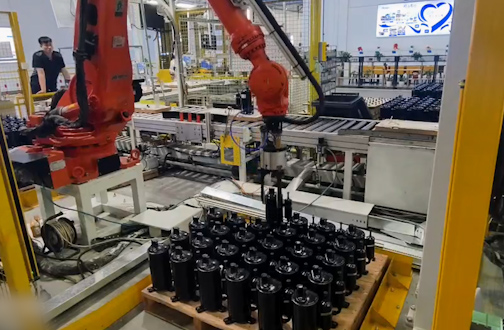In home appliance manufacturing, the automation level of material depalletizing directly affects overall productivity. For multi-category and non-standard stacked parts, traditional automation often struggles with adaptability. As a technical approach, a 3D vision–driven depalletizing system introduces a new path to addressing these challenges.
Solution
On production lines where multiple product types and irregular stacking patterns are common, traditional automation solutions frequently fall short, requiring manual intervention and becoming a major bottleneck for both efficiency and quality control.
The 3D vision–driven depalletizing system we delivered is a complete, end-to-end solution. A high-precision 3D camera is deployed above the depalletizing station to continuously capture 3D point-cloud data. The core algorithm instantly analyzes the data, accurately identifies each item’s position and orientation, and sends robot-ready instructions to execute a fully automated “see–decide–pick–place” workflow.
The system effectively addresses the following key scenarios:
Multi-spec production: One system handles various part types without frequent tooling changes.
Complex stacking patterns: Whether cross-stacked or aligned horizontally, the system reliably identifies gripping points.
Strong tolerance to incoming variations: As long as parts and pallets meet basic requirements, the system strives for stable performance and high pick success rates.
Technical Highlights
True technological value comes from stability, precision, and efficiency under real industrial conditions. Based on on-site validation, the system performs as follows:
1. Exceptional Precision
The system achieves ±1 mm recognition accuracy during actual operation. This enables the robot to grasp critical points with high reliability, reducing collision risks, preventing slippage, and delivering truly millimeter-level precision.
2. Optimized Speed
3. Adaptive Learning Capability
After training, customer's engineers can independently add new part models to the system, significantly enhancing production flexibility and adaptability.
Customer Value
This solution is designed to bring manufacturers the following potential benefits:
Efficiency improvement: Partial manual processes may be replaced by automation, helping increase throughput while reducing downtime caused by operator fatigue or shift changes.
Enhanced production flexibility: As multi-variety and small-batch manufacturing becomes more common, the system provides a fast and adaptable method for handling different part types.
Consistency and stability: When operated under proper conditions, the system aims to reduce variability caused by manual handling and support consistent product quality.
The successful implementation of this 3D vision–driven depalletizing system offers a practical technical pathway for intelligent upgrades in the home appliance industry. By bringing vision into automation, precision and efficiency become truly within reach.












 Return to List
Return to List







